Discovering a fruit, spice, or vegetable uniquely popular in other countries adds a new twist to your usual gardening or cooking.
Tomatillos is a popular fruit in the Mexican region and has been the subject of several debates over its toxicity. Some people eat them, but many are still skeptical if they are edible.
Are tomatillos toxic or a delicious treat? Let’s find out!
(You could use the table of contents below to jump to the sections that are most important to you.)
Q: Are Tomatillos Toxic?
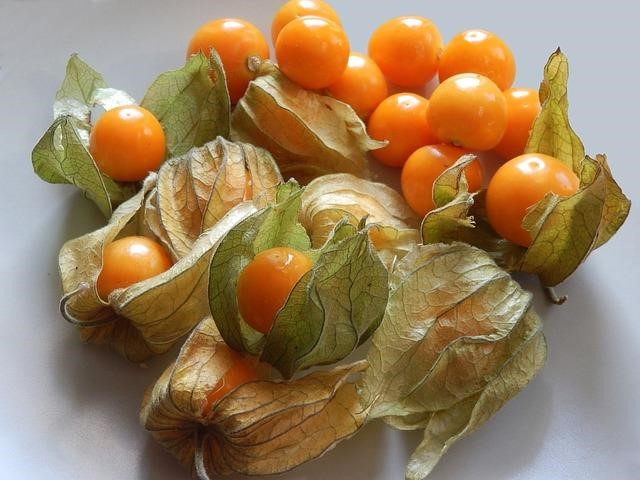
A: Ripe and mature tomatillos are not toxic. It is one of the edible seasonal fruits in USDA’s SNAP-Education for Nutrition Education.
However, everything else in the plant is poisonous. Unripe tomatillos are also toxic, so you have to make sure you are getting the ripe ones before mixing them with your food.
Unripe tomatillos are green in color and taste sour. Let the covering leaves or lantern leaves dry out and open on their own. Even if the fruit falls on the ground, it will continue to mature and be ripe on its own.
Until then, don’t consume them and let time make them a little bit sweeter and edible for you.
What is a Tomatillo?
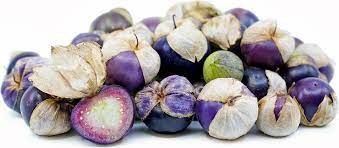
Tomatillo is a small tomato-like fruit that belongs to the nightshade family, including potatoes and tomatoes.
Lantern-like leaves cover the fruits that open up when the fruit starts to ripen. It is usually green like unripe tomatoes and turns red, yellow, and purple when they ripe.
You may notice that the name tomatillo has a Mexican vibe to it from the get-go. When translated in English, tomatillo means small tomatoes.
However, aside from its appearance and belonging to the same family of plants, it is entirely different from tomatoes.
It is known for several names such as:
- Green tomatoes
- Husk tomato
- Husk cherry
- Mexican tomato
- Jamberry
- Mexican ground cherry
- Large-flowered tomatillo
- Tomate de fresadilla (little strawberry tomato)
- Tomate milpero (field tomato)
- Tomate verde (green tomato)
- Miltomate (Mexico, Guatemala)
- Farolito (little lantern)
Tomatillos are a staple in Mexican cuisine and have originated in Mexico in the 1600s. They are a crucial ingredient in salsa verde, which is a staple sauce for enchiladas and chicharron.
Commercial production of tomatillos is in Mexico, Guatemala, and some parts of Central America. However, there is some homegrown production of tomatillos in warm regions of America.
The Taste of Tomatillo
Tomatillos taste sour with a bit of bitterness. The red variety of tomatillos are sweet and have a high pectin content, making them perfect as a jam.
They can be eaten raw and cooked and usually added in dips for tortillas, soups, or vinaigrette salads.
Health Benefits of Tomatillos
Aside from their tangy and subtly sweet flavor, tomatillos are full of nutrients good for your body. It contains nutrients and minerals such as:
- 2 % Vitamin A
- 19 % Vitamin C
- 3 % Iron
- 5 % Vitamin B-6
- 5 % Magnesium
- 1 mg Sodium
- 268 mg Potassium
Here are some of the health benefits of tomatillos when added to your diet:
1. Supports The Immune System And Prevents Colds
Tomatillos are high in Vitamin C, which can help support the immune system. Adding them to your diet can help increase your Vitamin C intake and help prevent colds during the flu season.
Vitamin C aids in producing collagen and white blood cells, which helps fight diseases and repair damaged cells.
2. Improves Digestion
Tomatillos is a good source of fiber which aids in good digestion. The fibers help absorb water and support the intestines to push out the wastes out of the body.
3. Reduce Cholesterol Levels And Lowers Blood Pressure
Tomatillos contains potassium with vasodilatory functions, contributing to lower blood pressure. It helps relax the blood vessels and makes it easier for the cardiovascular system to pump blood throughout the body.
The fiber in tomatillos can also help you remove bad cholesterol and reduce your risk for life-threatening conditions such as stroke. It has the lowest potassium-sodium ratio among fruits and vegetables.
4. Reduces Your Risk For Systemic Diseases
Tomatillos serve as a healthy alternative for dips and salad ingredients. They contribute to a healthy diet that reduces your risk for heart disease, diabetes, and kidney problems
5. Fights Cancer And Bacterial Infections
Tomatillos contains antioxidants called withanolides that prevent the formation of cancer cells and have antibacterial properties.
6. Good For Your Eyesight
Tomatillos are also high in Vitamin A that nourishes and prevents premature aging of your eyes. It can also help delay the development of cataracts in the elderly.
7. Prevents The Formation of Tumor
Withanolides in tomatillos not only prevent cancer but also aids in keeping you free from any tumors.
According to studies, withanolides have a potent inhibitory effect on harmful cells that prevents them from clumping together and turning into cancer cells.
Best Ways To Add Tomatillos in Your Meals
By this time, you might be thinking of ways on how to include tomatillos in your diet.
Like tomatoes, it is a pretty flexible fruit and gives a unique flavor to your usual sauces or a key ingredient to your savory dishes.
Here are some tomatillo recipes for you:
1. Mango Tomatillo Guacamole
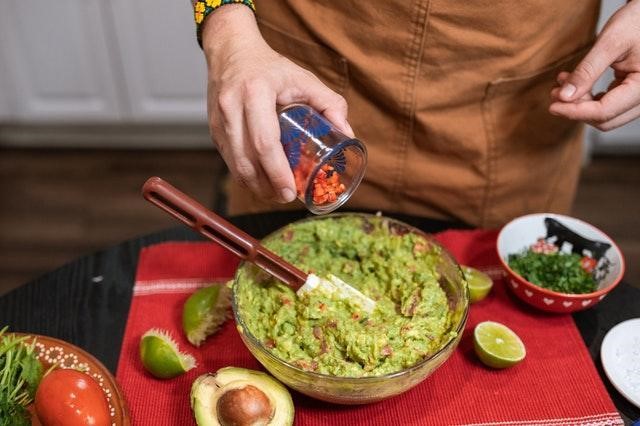
Give your guacamole a new twist by adding a sour and sweet flavor from tomatillos and mangoes.
Ingredients:
- 2 Tomatillos
- 2 Avocados
- 1 Ripe mango
- ½ Onion
- 1 Chili pepper
- 2 tbsps. of chopped cilantro
- ½ cut of lemon
- A pinch of salt to taste
Mixing directions:
- Roast 2 tomatillos and crush them using a food processor until they are smooth and creamy.
- Mash the avocados and chopped mangoes using a fork.
- Add the pureed tomatillos, pepper, onion, cilantro, and lime to the mashed avocados and mango.
- Add salt and pepper to taste.
2. Salsa Verde
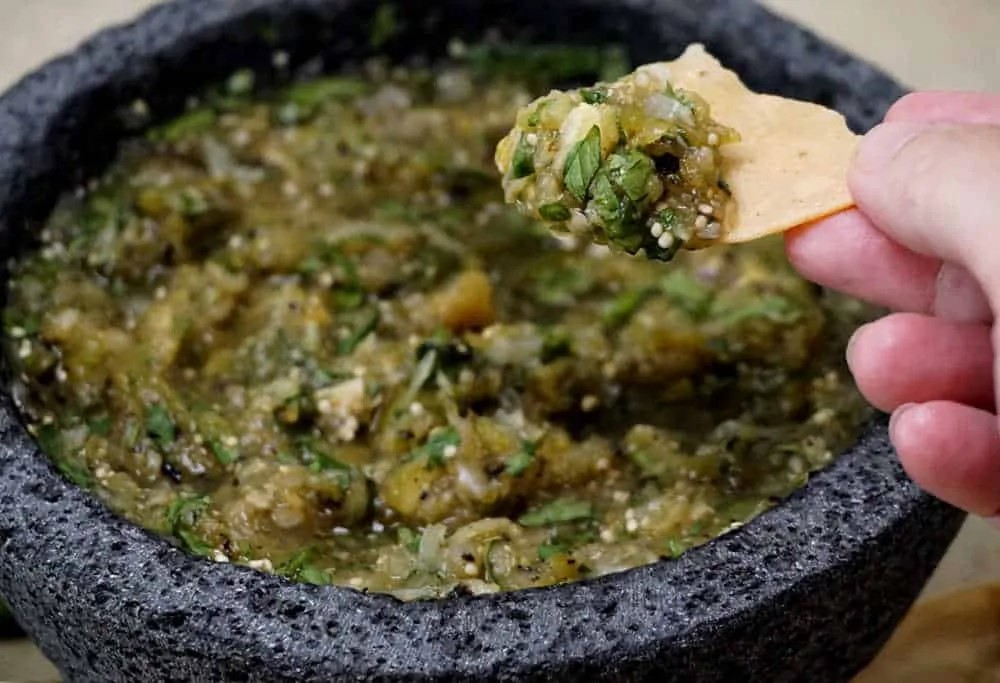
Tomatillos are a popular ingredient in salsa verde, which is a perfect dip for your tortillas or chips.
Ingredients:
- 1 lb. tomatillos
- 1/2 cup finely chopped onion
- 1 tsp. minced garlic
- 1 Minced chili pepper
- 2 tbsps chopped cilantro
- 1 tbsp. chopped oregano
- 1/2 tsp. ground cumin
- 2 cups water
- Salt to taste
Mixing directions:
- Roast or grill tomatillos, onion, garlic, and chili pepper in a saucepan.
- Mix the dry condiments such as cilantro, oregano, cumin, and add water.
- Add salt to taste.
- Let it boil and lower the heat once it reaches its boiling point.
- Let it cook for 15 minutes until all the ingredients are soft.
- Purée the mixture in a blender until smooth.
3. Tomatillo Vinaigrette
Put a healthy twist to your salads with tomatillos.
Ingredients:
- 2 Chopped tomatillo
- 2 tbsps. balsamic vinegar
- 1 tbsp olive oil
- ½ tsp. Mustard
- 1 tbsp chopped basil
Directions:
- Mix chopped tomatillo and basil.
- Add balsamic vinegar, olive oil, and vinegar.
- Adjust the portions based on your serving size.
4. Cucumber-Tomatillo Gazpacho

Tomatillos are also a unique addition to your soup to improve its overall flavor.
Ingredients:
- 2 tbsps. olive oil
- 1 lb. tomatillos
- 2 Green peppers cut in half
- 1 cup chopped scallions
- 2 Chopped roasted green chilies
- 1 Clove of roasted garlic clove
- 1 tbsp. lime juice
- 1 tbsps. chopped cilantro
- 1 cup vegetable stock
- 1 tsp. sugar
- 4 tbsps. plain yogurt
- 1 tsp. of apple cider vinegar
- Salt and pepper to taste
Directions:
- Chop the tomatillos, green pepper, scallions, and garlic.
- Put the chopped veggies in a blender or food processor along with ACV and lime juice. Purée until smooth.
- Add the vegetable stock and mix in the salt, pepper, and sugar to taste.
- Finish the dish by topping it with yogurt and cilantro.
Health Risk of Tomatillos For Patients Suffering From Joint Pain
Tomatillos contain alkaloids that can worsen inflammation in patients with arthritis.
They may also cause allergic reactions, such as itchy eyes and skin, vomiting, and runny nose, for patients allergic to tomatoes and the rest of the nightshade family.
Growing Tomatillos in Your Garden
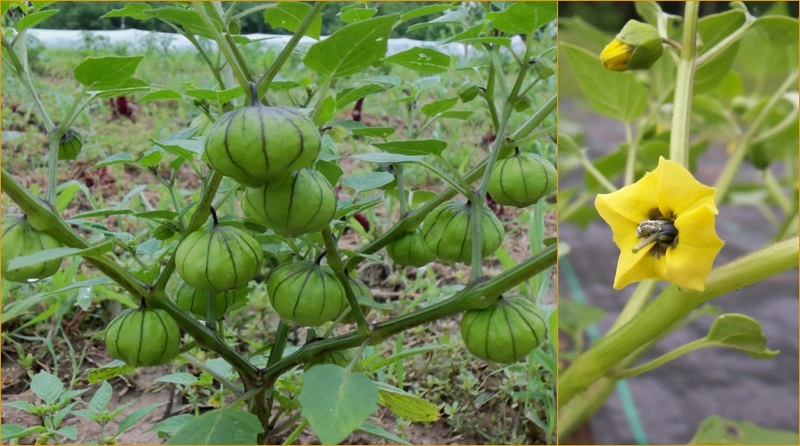
Tomatillos are easy to grow in areas with warm or tropical weather. They are small plants and grow up to 4 meters high. Like tomatoes, they need support from staking so they can reach their optimal height.
If you have successfully grown tomatoes before, cultivation tomatillos will be a breeze for you.
Here are the ideal growing conditions for tomatillos:
Soil And Weather Requirements
Tomatillos can grow in any soil condition. However, like any other plant, they thrive in fertile and well-draining soil.
Mulch is also a must for this plant to keep the weeds out and prevent pests and diseases from affecting the lower leaves.
Since they are tropical plants, they hate the cold and grow best in warm locations with a temperature of 25°C and above.
The ideal soil for tomatillos is neutral, ranging from a soil PH level of 5.5 to 7.3. Usually, gardeners germinate and grow tomatillos indoors until they are strong enough to withstand the outdoor temperatures.
Sun And Watering Requirements
Tomatillos grow well in direct sunlight and require full sun. Mature tomatillos are drought tolerant.
However, they still need about 1 to 1.5 inches of water every week. Tomatillos hate wet leaves, so avoid foliar watering as it can attract plant diseases and molds.
Fertilization and Pest Control
Usually, tomatillos don’t require fertilizer, but they could use some help from high phosphorus fertilizers with a moderate level of nitrogen and potassium. Phosphorus boosts the bloom production of plants under the nightshade family which also activates their fruit production.
Tomatillos are also a magnet of common pests in tomatoes, such as aphids, fruit worms, cutworms, and whiteflies. They usually stay at the underside of the leaves and lay eggs on top of the leaves.
You might also like: Are Radish Leaves Poisonous Or Safe To Eat?
Frequently Added Questions (FAQs)
Are raw tomatillos toxic?
Raw tomatillos are not toxic as long as they are ripe. Let them ripen and turn into red, yellow, or purple before you use them. Raw tomatillos are a perfect ingredient for salsa and other dips and sauces like vinaigrettes.
Are tomatillos toxic to dogs?
Fruits that belong to the nightshade family contain alkaloids that are toxic dogs. Tomatoes and tomatillos can cause them to have an upset stomach and brain and heart issues.
Can tomatillos kill you?
Unripe tomatillos are toxic, but they are poisonous enough to put you in a hospital. If you mistakenly ate an unripe tomatillo, you will only experience stomach pain, headache, or diarrhea.
How do you clean a tomatillo?
Clean tomatillos by removing the husk and the calyx as they are toxic. Remove the sticky sap coated around the tomatillo fruits by washing them under cold water.
Are tomatillos inflammatory?
Yes. Tomatillos contain alkaloids that can cause inflammation. They are not recommended for patients with rheumatoid arthritis as these fruits can worsen their condition.
Do tomatillos have sugar?
A ripe medium tomatillo contains 1 gram of sugar. The sweet flavor increases as you roast or add them to your stew.
It also contains fiber that aids in good digestion and aids in converting sugar and carbohydrates into readily available energy for your body to use.
How healthy are tomatillos?
Tomatillos are a good source of Vitamin C, Vitamin A, Vitamin E, and antioxidants such as zeaxanthin, lutein, and beta-carotene. It also contains withanolides that prevent the formation of tumors and several types of cancers.
Can you eat premature tomatillos?
No. Premature tomatillos are toxic and extremely sour. It is best to wait for them to be ripe and get sweeter and flavorful.
If consumed unripe, tomatillos can cause stomach pain due to their toxicity. However, it will not be toxic enough to get you admitted to a hospital.
How do you tell if tomatillos are bad?
Good quality tomatillos are firm and spotless. If your tomatillos are soft when touched and have a lot of splotches, throw them away or add them to your compost pile.
What can you do with tomatillos other than salsa?
You can add it as the main ingredient for chicken rice bowls and gazpacho. It can also serve as a refreshing ingredient for your vinaigrette.
Final Thoughts
After reading this post, would you still ask, are tomatillos toxic?
Hopefully not! Tomatillos are a delicious treat that gives an authentic kick to the traditional Mexican dishes.
Since you already know the health benefits and flavor of tomatillos, we hope you give tomatillos the value they deserve. Also, be careful not to include its toxic parts in your meals.
We hope that this post has helped answer your questions about tomatillos. Please don’t forget to share it with your friends and let them discover the one-of-a-kind tomatillo.
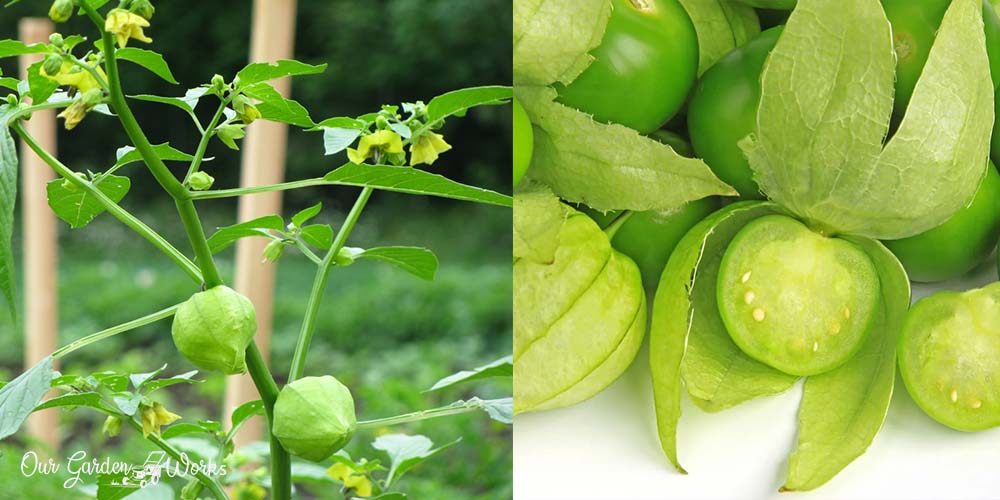
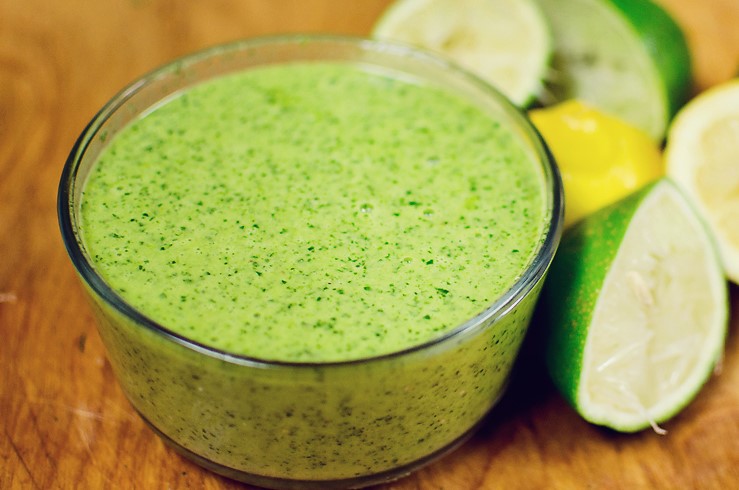
I grew some tomatillos in my back yard and most of the ones I picked weren’t mature per your description. The ones we get from the store are all green. We’ve made chili verde and noticed no I’ll effects.
Anyway, the yellow tomatillos I have, the paper turns yellow and it falls off the plant. Those are okay aren’t they?
Hi Mr Kim,
There has been some debate about the toxicity of green tomatillos. We highly advice to wait for them to ripen to keep everyone safe. When it comes to health, we believe it’s better to be safe than sorry. You may harvest the tomatillos once the papery husks splits open, dries out, and falls off. Make sure to clean the tomatillos properly and remove the sticky substance on its surface. However, we cannot guarantee the safety of eating green tomatillos, it’s up to you to proceed with caution.
From author: Jeanne Keith
You seem to be confusing ground cherries with tomatillo. Your photos are misleading. I recommend that readers do their own research. Your conclusions are different from any other that I have seen
Hi Ann, thank you about your feedback. Our bad 😀